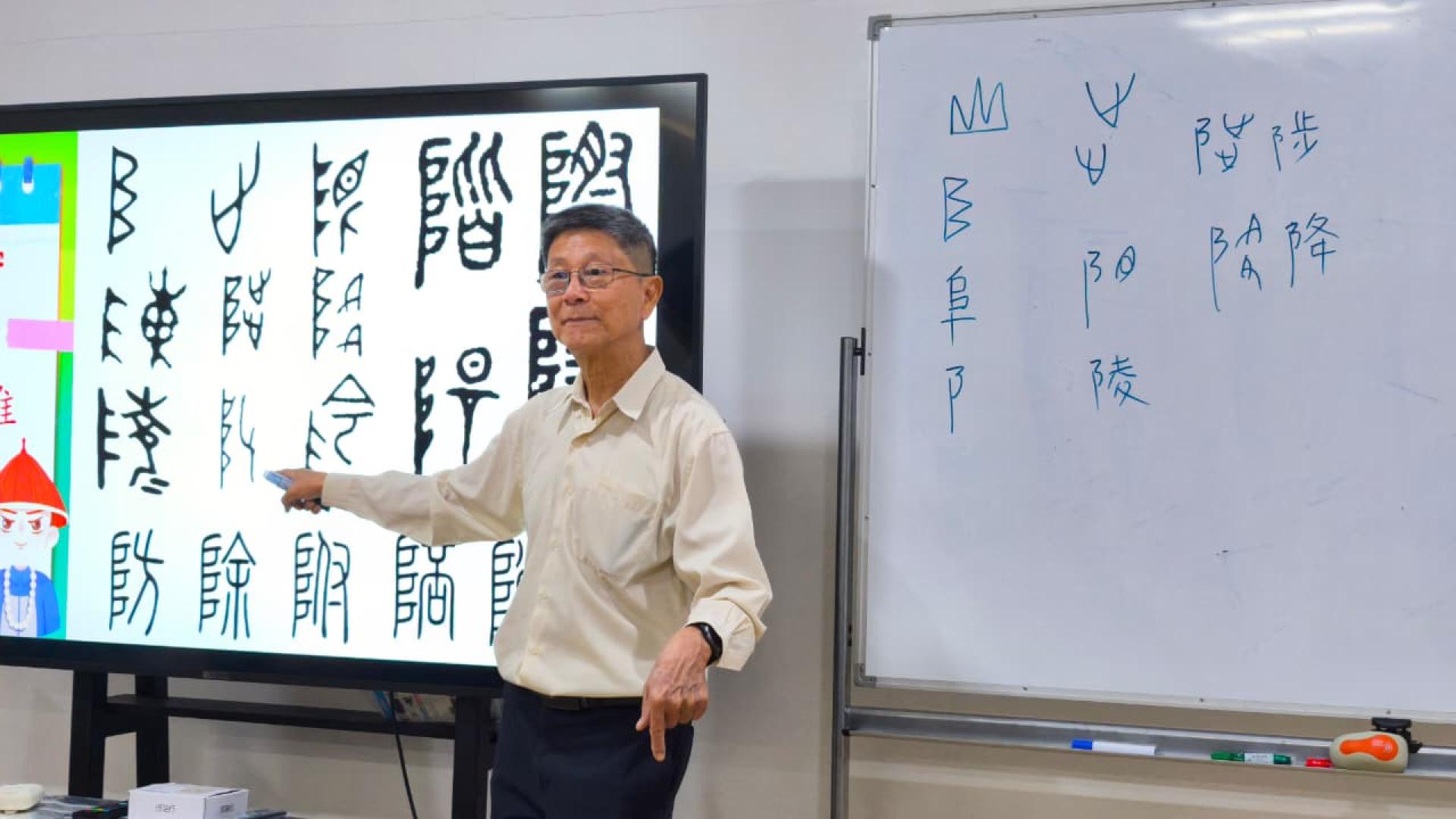(City, 14th) The Ji De Care Association organized a Cultural Lecture Hall, with Shen Renxiang as the keynote speaker.
Shen Renxiang gave a lecture entitled “Selected Readings from the Classics,” focusing on the second part of Laozi's Daodejing: shifting from the ontology of the “Dao” to the phenomenal world, profoundly expounding on the core of Laozi's dialectical thinking—the relativity and interdependence of things—and thereby introducing the “non-action” (wu wei) attitude toward life.
The historical retrospective covered the rise and establishment of the Qing dynasty, its entry into the Central Plains and period of great prosperity, internal strife and external threats leading to decline, changes and downfall, and the influence the Qing dynasty left on later generations in terms of territory, ethnicity, institutions, culture, and national destiny.
In the “Explaining Characters” segment, the character ‘除’ (chu, to eliminate/remove), surprisingly, is related to stairways, as are: 阜 (mound), 除 (stair), 陈 (arrange/display), 陛 (palace steps), 阶 (stair), 陟 (ascend), 降 (descend), 随 (follow), 阴 (shade), 阳 (sunny), 陵 (hill/mausoleum), 附 (attach), 阿 (ridge/bank), 陪 (accompany), 隐 (hide), 隙 (gap), 际 (border), 防 (defend), 陨 (fall), 限 (limit), 队 (team). All these share the ‘阜’ (left 阝) radical, and most are related to topography, steps, ascent and descent, etc. The spatial metaphors in characters like 陛, 阶, 除, are derived from the literal meaning of steps and extended to refer to hierarchical concepts. The action-imagery of characters like 陟, 降, 随 reflects how ancient people’s understanding of space translated into descriptions of social behavior.
Shen Renxiang gave a lecture entitled “Selected Readings from the Classics,” focusing on the second part of Laozi's Daodejing: shifting from the ontology of the “Dao” to the phenomenal world, profoundly expounding on the core of Laozi's dialectical thinking—the relativity and interdependence of things—and thereby introducing the “non-action” (wu wei) attitude toward life.
The historical retrospective covered the rise and establishment of the Qing dynasty, its entry into the Central Plains and period of great prosperity, internal strife and external threats leading to decline, changes and downfall, and the influence the Qing dynasty left on later generations in terms of territory, ethnicity, institutions, culture, and national destiny.
In the “Explaining Characters” segment, the character ‘除’ (chu, to eliminate/remove), surprisingly, is related to stairways, as are: 阜 (mound), 除 (stair), 陈 (arrange/display), 陛 (palace steps), 阶 (stair), 陟 (ascend), 降 (descend), 随 (follow), 阴 (shade), 阳 (sunny), 陵 (hill/mausoleum), 附 (attach), 阿 (ridge/bank), 陪 (accompany), 隐 (hide), 隙 (gap), 际 (border), 防 (defend), 陨 (fall), 限 (limit), 队 (team). All these share the ‘阜’ (left 阝) radical, and most are related to topography, steps, ascent and descent, etc. The spatial metaphors in characters like 陛, 阶, 除, are derived from the literal meaning of steps and extended to refer to hierarchical concepts. The action-imagery of characters like 陟, 降, 随 reflects how ancient people’s understanding of space translated into descriptions of social behavior.
